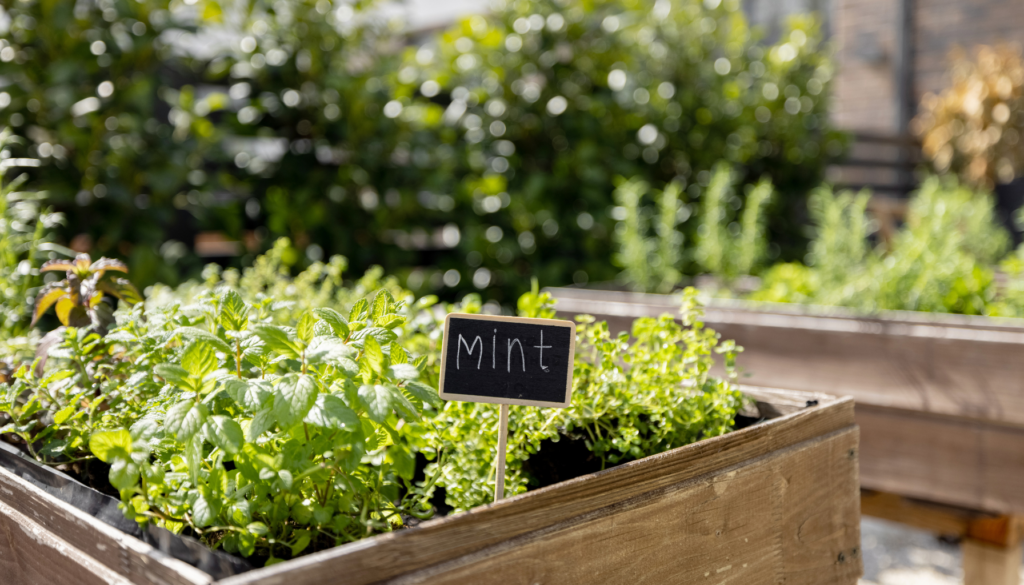Fresh herbs don’t just add flavor to your meals—they also bring life and beauty to your home. The best part? You don’t need a backyard or even a balcony to grow them. With the right setup, you can grow your favorite herbs indoors all year long, even in a small apartment.
This guide will show you everything you need to know to start your own indoor herb garden—from choosing the right herbs to keeping them happy and thriving.
Why Grow Herbs Indoors?
Growing herbs indoors offers tons of benefits:
- Easy access to fresh flavor while cooking
- Adds greenery and natural scent to your kitchen
- Saves money on store-bought herbs
- Fun and rewarding hobby
And since you’re controlling the environment, you can enjoy your mini garden no matter the season.
Best Herbs to Grow Indoors
Some herbs thrive better indoors than others. Here are the best ones for beginner-friendly indoor gardening:
- Basil – Loves warmth and sunlight
- Mint – Grows quickly and does well in containers
- Thyme – Hardy and great for small pots
- Parsley – Easy to grow and very versatile
- Chives – Minimal care and grows fast
- Oregano – Great for Mediterranean dishes, thrives indoors
- Rosemary – Needs good drainage and light, but very rewarding
- Cilantro – A bit trickier but totally possible with good light
Start with 2–3 that you cook with most often—you can always expand later.
Choose the Right Containers
You don’t need fancy planters, but you do need pots with:
- Good drainage holes
- A saucer or tray to catch excess water
- Enough space for roots to grow (6–8 inches deep is ideal)
Clay or ceramic pots work great, but recycled jars or tin cans can also work—just be sure to add drainage.
Give Them the Right Light
Herbs need sunlight—at least 4 to 6 hours a day, ideally more. A south-facing window is perfect. If that’s not available, consider using a grow light to give your herbs the boost they need.
Signs your herbs need more light:
- Leggy or stretched stems
- Pale leaves
- Slow or uneven growth
Place them where they’ll get the most consistent light throughout the day.
Watering Tips for Indoor Herbs
Overwatering is one of the most common mistakes with indoor herbs. These tips will help:
- Stick your finger about 1 inch into the soil—if it feels dry, it’s time to water
- Use room-temperature water
- Water in the morning to avoid root rot
- Make sure water drains out completely—never let pots sit in water
Most herbs prefer slightly dry soil over soggy conditions.
Harvest the Right Way
You don’t need to wait months before enjoying your herbs. In fact, regular harvesting encourages more growth.
How to harvest:
- Use clean scissors or pinch leaves with your fingers
- Never cut more than one-third of the plant at once
- Always harvest from the top to keep herbs bushy and full
Bonus: fresh-cut herbs make your kitchen smell amazing!
Fertilizing and Feeding
While herbs are generally low-maintenance, a little nutrition helps them thrive indoors.
- Use a balanced liquid fertilizer every 3–4 weeks
- Don’t overdo it—too much fertilizer can make herbs lose flavor
- Organic compost tea or fish emulsion are great natural options
Remember, herbs grown for flavor don’t need heavy feeding like other plants.
Combatting Common Indoor Herb Problems
Even with the best setup, you may run into a few issues:
- Leggy herbs? → Not enough light
- Yellow leaves? → Overwatering or poor drainage
- Brown tips? → Dry air or inconsistent watering
- Bugs? → Rinse plants gently or use neem oil spray
Stay observant and your herbs will bounce back quickly.
Creative Ways to Display Your Indoor Herb Garden
Make your indoor herb garden both functional and beautiful:
- Hang pots on a wall or vertical rack
- Use a sunny kitchen windowsill
- Create a mini shelf garden near a light source
- Plant in matching jars or mugs for a cozy look
- Try a hanging herb basket over the sink
Functional decor? Yes, please.
Final Thoughts: Fresh Flavor and Green Vibes, Year-Round
Growing herbs indoors is a simple way to bring nature into your home—and your cooking. Whether you’re in a city apartment or a country cottage, you can enjoy the joy of gardening any time of year.
With a bit of light, water, and love, your kitchen can become your favorite green corner.




Pingback: 10 Expert Tips to Create a Butterfly-Friendly Garden